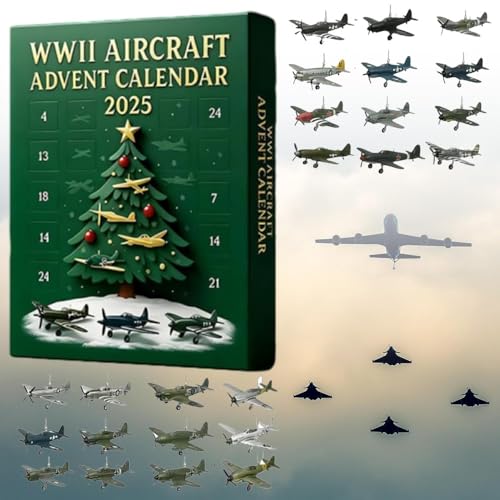Imagine the roar of engines, the flash of machine guns, and the thrilling dogfights in the skies above battlefields. World War 2 was a time when pilots became knights of the air, and their trusty fighters were their steeds. But with so many incredible machines built for aerial combat, how do you even begin to understand them all?
Choosing a favorite fighter from this era can feel overwhelming. Were the sleek British Spitfires the best, or did the rugged American Mustangs rule the skies? Perhaps the nimble German Messerschmitts were truly superior? It’s tough to sort through the legends and the facts to find out which aircraft truly made the biggest impact. Many people wonder what made these planes so special and how they changed the course of the war.
By diving into the world of World War 2 fighter aircraft, you’ll discover the amazing engineering and brave pilots that defined aerial warfare. You’ll learn about the strengths and weaknesses of famous planes and understand why some became icons. Get ready to explore the skies and find out which fighter aircraft truly soared above the rest!
Our Top 5 Fighter Aircraft Of World War 2 Recommendations at a Glance
Top 5 Fighter Aircraft Of World War 2 Detailed Reviews
1. German Fighter Aircraft of World War II (Technical Guides)
Rating: 9.2/10
Dive into the fascinating world of World War II aerial combat with “German Fighter Aircraft of World War II (Technical Guides).” This book offers a deep look into the powerful machines that dominated the skies. You’ll discover the engineering marvels behind these iconic planes. It’s a must-have for anyone interested in military history and aviation.
What We Like:
- Detailed technical drawings clearly show how each aircraft worked.
- Comprehensive information explains the development and purpose of each fighter.
- High-quality photographs bring the planes to life.
- The explanations are easy to understand for most readers.
What Could Be Improved:
- Some of the historical context could be expanded.
- A glossary of technical terms would be helpful for beginners.
- More personal stories from pilots might add another layer of interest.
This guide provides an excellent foundation for understanding German fighter aircraft. It’s a valuable resource for both enthusiasts and students of history.
2. American Fighter Aircraft of World War II (Technical Guides)
Rating: 9.1/10
Dive into the thrilling world of World War II aviation with “American Fighter Aircraft of World War II (Technical Guides).” This book lets you explore the incredible machines that defended the skies. You’ll learn about the powerful engines and sharp designs of these iconic planes. It’s a fantastic resource for anyone fascinated by history and engineering.
What We Like:
- It offers detailed information on many famous American fighter planes.
- The technical drawings and explanations make complex details easy to understand.
- Readers can learn about the history and development of these aircraft.
- It’s a great learning tool for students and history buffs alike.
What Could Be Improved:
- The book could benefit from more color photographs to bring the aircraft to life.
- Some readers might find the technical jargon a bit challenging at first.
- More personal stories from pilots could add an extra layer of interest.
This guide offers a solid foundation for understanding these legendary aircraft. It’s a valuable addition to any collection for those who appreciate aviation history.
3. World War II Fighter Planes Spotter’s Guide
Rating: 8.6/10
Calling all history buffs and aviation enthusiasts! The World War II Fighter Planes Spotter’s Guide is your ticket to understanding the iconic aircraft that dominated the skies during the Second World War. This handy guide helps you identify famous planes like the Spitfire and the Messerschmitt. It’s designed for anyone curious about these incredible machines.
What We Like:
- Clear illustrations make identifying planes easy.
- Concise descriptions provide key details about each aircraft.
- Portable size fits perfectly in a backpack for field trips or museum visits.
- It covers a good range of well-known fighter planes.
What Could Be Improved:
- More in-depth technical specifications could be included for advanced users.
- A glossary of aviation terms would be helpful for beginners.
- The binding could be more robust for frequent use.
This guide offers a solid introduction to World War II fighter planes. It’s a valuable resource for sparking curiosity and learning about aviation history.
4. WW2 Aircraft Advent Calendars 2025
Rating: 9.2/10
Get ready to soar through history this Christmas with the WW2 Aircraft Advent Calendars 2025! This unique advent calendar brings the thrill of World War II aviation right to your home, offering a daily surprise of miniature fighter jet ornaments. It’s a fantastic way to count down to the holidays while celebrating a passion for history and aircraft.
What We Like:
- Each of the 24 miniature planes features authentic colors and historical markings, bringing vintage-inspired craftsmanship to your holiday decor.
- The realistic aviation collectibles are intricately designed, making them perfect for enthusiasts and budding collectors alike.
- The interactive countdown offers daily excitement, allowing everyone from kids to adults to enjoy the fun of revealing a new aircraft each day.
- This calendar makes a thoughtful and engaging present for history buffs, veterans, and anyone with an interest in World War II air fighters.
- The included gold hangers mean you can instantly use the aircraft ornaments to decorate your Christmas tree or shelves, adding a festive touch.
What Could Be Improved:
- While the craftsmanship is high quality, some collectors might desire even more detailed historical accuracy on the smallest scale models.
- The “weathered tones” might not appeal to everyone’s aesthetic for pristine holiday decorations.
This advent calendar is more than just a countdown; it’s an engaging journey through aviation history. It offers a delightful and educational way to celebrate the festive season.
5. New Ray World War II Replica Fighter Air Planes ClassicAircraft P-51D Red Tails 1:48
Rating: 9.2/10
Get ready to soar back in time with the New Ray World War II Replica Fighter Air Planes ClassicAircraft P-51D Red Tails 1:48. This awesome model brings the iconic P-51D Mustang fighter plane to life. It’s a fantastic way to learn about history and have some fun. The details on this replica are really neat.
What We Like:
- It looks super cool! The P-51D “Red Tails” paint scheme is really eye-catching.
- Assembly is a breeze. You don’t need any messy glue.
- A screwdriver is included, so you have everything you need right in the box.
- It comes pre-painted, saving you a lot of time and effort.
- The model is a good size, with a fuselage about 7 1/2 inches long and a wingspan of about 9 inches wide.
- The removable plastic stand lets you display your finished plane proudly.
What Could Be Improved:
- Assembly is required, so younger kids might need a grown-up to help them out.
- While it’s pre-painted, some model enthusiasts might wish for more advanced painting options.
This P-51D replica offers a fun and accessible way to own a piece of aviation history. It’s a great gift for any history buff or model airplane fan.
Choosing Your World War 2 Fighter Aircraft: A Buyer’s Guide
So, you want to bring home a piece of history, a legendary World War 2 fighter aircraft? That’s fantastic! Whether you’re a seasoned collector or just starting your journey, picking the right model can be exciting. This guide will help you make a smart choice.
Key Features to Look For
When you’re looking at these amazing machines, keep an eye out for a few important things.
- Authenticity: Does the model look like the real thing? Check the details. The shape of the wings, the cockpit, and the engine should be accurate.
- Scale: Fighter planes come in different sizes. Common scales are 1:72, 1:48, and 1:32. Smaller scales are great for saving space, while larger scales show off more detail.
- Markings and Paint Schemes: Many models come with decals for different squadrons or famous planes. Look for crisp, clear decals that represent real aircraft from the war.
- Articulation: Some models have moving parts. This could be propellers that spin, landing gear that lowers, or even canopy that opens. These features add a lot to the display.
- Display Options: Does it come with a stand? This lets you show your fighter in flight, which is a classic look.
Important Materials
What your fighter plane is made of matters.
- Plastic: Most models are made of plastic. High-quality plastic feels sturdy and holds paint well. Cheaper plastic can be brittle.
- Die-Cast Metal: Some higher-end models are made from die-cast metal. These are heavy and feel very premium. They often have excellent detail.
- Decals: These are the stickers that add markings and insignias. Good decals are thin and conform to the model’s surface.
Factors That Improve or Reduce Quality
A few things can make a big difference in how good your fighter looks and feels.
- Detail Level: The more detailed the model, the better. Look for things like panel lines, rivets, and cockpit instruments. These small touches make a big impact.
- Paint Finish: A smooth, even paint job is crucial. Avoid models with messy paint or visible brush strokes if it’s pre-painted. If you plan to paint it yourself, good plastic will take paint better.
- Fit of Parts: When you assemble a model, the parts should fit together nicely. Gaps or misaligned pieces can really hurt the final look.
- Brand Reputation: Some brands are known for making top-notch models. Doing a little research on the manufacturer can save you from disappointment.
User Experience and Use Cases
How will you enjoy your World War 2 fighter?
- Display Piece: Most people buy these to display on shelves or in display cases. A well-made model can be a stunning centerpiece.
- Hobby Building: If you enjoy building things, a model kit offers a rewarding experience. You can paint and customize it to your liking.
- Educational Tool: These models are great for learning about history. They can spark conversations about the planes and the people who flew them.
- Gift: A classic fighter plane model makes an excellent gift for history buffs, aviation fans, or anyone who appreciates craftsmanship.
Frequently Asked Questions (FAQ)
Q: What is the most popular World War 2 fighter plane model?
A: The Supermarine Spitfire and the North American P-51 Mustang are incredibly popular choices. Many collectors love the iconic look and historical significance of these aircraft.
Q: Should I buy a pre-built model or a kit?
A: Pre-built models are ready to display right away. Model kits offer a fun building experience and allow for customization, but they require time and effort to assemble and paint.
Q: Are there different scales for these models?
A: Yes, common scales are 1:72, 1:48, and 1:32. Smaller scales are good for collecting many planes, while larger scales show more intricate details.
Q: How do I clean my fighter plane model?
A: Gently dust your model with a soft brush or a can of compressed air. Avoid using harsh chemicals or water, as they can damage the paint and materials.
Q: Can I make my model look more realistic?
A: Absolutely! Many modelers use weathering techniques to make their planes look battle-worn. This includes adding subtle dirt, grime, or exhaust streaks.
Q: Where can I buy World War 2 fighter plane models?
A: You can find them at hobby shops, online retailers like Amazon, and specialized model websites. Some collectible stores also carry them.
Q: Are die-cast metal models better than plastic ones?
A: Die-cast metal models often have a heavier feel and can showcase fine details well. Plastic models offer a wider range of kits and are generally more affordable.
Q: How much detail should I expect in a good model?
A: A good model will have detailed cockpits, accurate panel lines, and well-defined engines. The more realistic the features, the higher the quality.
Q: What does “scale” mean in model airplanes?
A: Scale tells you how big the model is compared to the real aircraft. For example, 1:72 means the model is 72 times smaller than the actual plane.
Q: Can I change the paint scheme on a pre-painted model?
A: It’s difficult to repaint a pre-painted model without damaging it. If you want to customize colors, it’s usually best to start with a model kit.
In conclusion, every product has unique features and benefits. We hope this review helps you decide if it meets your needs. An informed choice ensures the best experience.
If you have any questions or feedback, please share them in the comments. Your input helps everyone. Thank you for reading.

Hi, I’m Tom Scalisi, and welcome to The Saw Blog! I started this blog to share my hands-on experience and insights about woodworking tools—especially saws and saw blades. Over the years, I’ve had the chance to work with a wide range of tools, and I’m here to help both professionals and hobbyists make informed decisions when it comes to selecting and using their equipment. Whether you’re looking for in-depth reviews, tips, or just advice on how to get the best performance out of your tools, you’ll find it here. I’m excited to be part of your woodworking journey!





